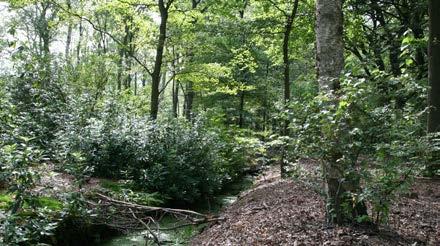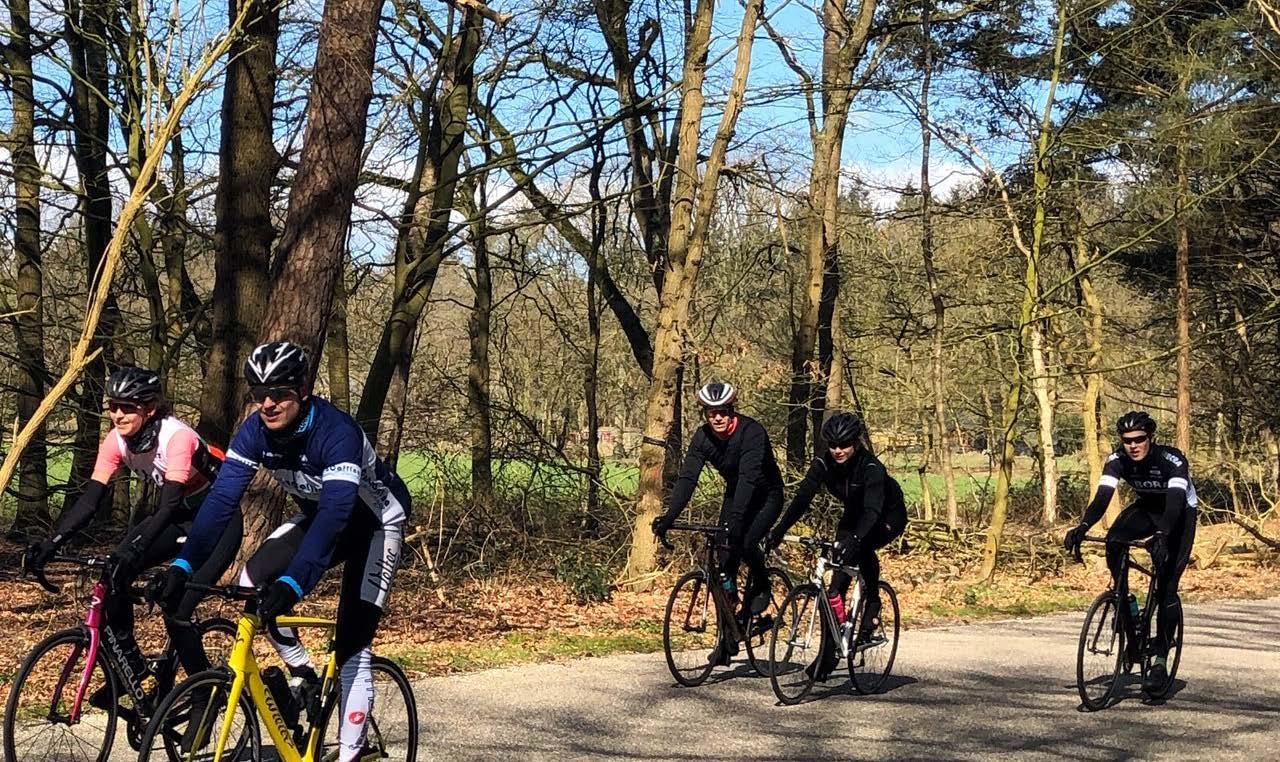
5 minute read
Park-inclusive development
Utrecht is one of the most centrally located and fastest growing regions in the Netherlands, with hundreds of thousands of housing units planned to be built until 2050. It is also a region of iconic landscape areas, ranging from typically Dutch peat meadows and 17 th century estates to the forests and hills of the National Park Utrechtse Heuvelrug, which is annually used by over three million people. In the current situation, planners struggle to find suitable and available locations for these housing units, while landscape managers struggle to find sufficient funds to develop and maintain the landscape areas. Park-inclusive development intends to solve these two problems by connecting them strongly in a paradoxical concept: strengthen nature by development.
A sensible but paradoxical concept In the financing of landscape, the costs and the benefits are usually not fairly shared. Some homeowners for example enjoy a rising value of their property when a park organization or government invests in a landscape project. So the idea of coupling development of cities and landscapes makes sense, but the idea is bound to raise suspicion. How can we strengthen the landscape in the region, while ‘consuming’ it at the same time by building houses? To achieve the most robust park development and the financial flexibility that is needed to spend more on landscape in the housing area itself, housing projects need to be of a considerable size and density. Something that especially the suburban municipalities find difficult, as it goes against their self-image of a village community. At the moment, existing housing areas
Advertisement
in the vicinity already become more and more part of the national park by clever vegetation strategies, focusing on public space and private gardens (initiative ‘Heuvelrugtuin’). This links closely to the idea of natureinclusive design of new buildings and infrastructure. The focus of Park-inclusive Development is on spaces around, not within, the National Park. Landscape investments and raised awareness around the park are establishing green ‘fingers’ and other connections to the park, thereby increasing the area of influence of the park.
Initiative: Park-inclusive development, 2018
Type of organization: think tank
Landscape focus: national park
Scale: region
Website: www.np-utrechtseheuvelrug.nl
Financing model: private donations, public subsidies and business revenues from care and hospitality
Park-inclusive development. Photos: Martine Sluijs Contact with Think Tank and advisors: Martine Sluijs (PIP), Janine Caalders (NP Heuvelrug), Jasper Kuipers (Staatsbosbeheer), Sander Jansen (Zeist), Merten Nefs (Deltametropool), Paul Roncken (Utrecht), Walter Kooy (advisor), Bertus Cornelissen (Utrecht) and Theo Stauttener (Stadkwadraat)

Read more: https://deltametropool.nl/nieuws/ parkinclusief-ontwikkelen/ Ring ring ring ring! Ringpark Magazine https://www.np-utrechtseheuvelrug.nl/nl/ Heuvelrugtuin

Park-inclusive development. Photo: Martine Sluijs

Think tank The National Park Heuvelrug, owned by 42 parties including the National Forest Service (Staatsbosbeheer), faces a doubling of users until 2030, while the budget already has a yearly gap of 1,5 million (about 10%). To tackle this problem and explore the idea of park-inclusive development, a think tank was organized, including stakeholders from local and regional governments, park managers, economists and land owners. Several cash contributions from direct use of the park are explored: charging for a lookout tower, parking facility, food and drinks, advertisement billboards along large infrastructure, renewable energy, fees from pipelines, wood production, 5G antennas in trees, a phone app to facilitate small donations from visitors. The park is already attempting to engage cycling clubs to collaborate and contribute to a program of Cycling Forests. And it creates awareness among urban dwellers through collaboration with urban ‘sister-parks’, which become part of the regional park network. Collective models are also explored: green mortgage/loans/savings, green bonds and green VAT, tax deduction for large donations, CO2 and nitrogen compensation, water storage, health care and large recreational facilities. Some of these ideas are currently still taboo for park managers and nature activists. The think tank proposes that the municipalities in the direct vicinity of the National Park form a pact for joint spatial planning and financial models, to avoid competition and random policy differences; that landscape quality is properly measured and monitored; that local initiatives and land owners are involved; and that new business models are tested.
Lessons learned The initiative of park-inclusive development shows the new opportunities that emerge when we think in combinations of urban and natural landscapes, mixing the colors ‘red’ and ‘green’ on the map. Red can pay for green, while green can infiltrate the red so it becomes ecologically and visually part of a larger park area. With such a large pallet of options, and limited means and people to work with, the question is where to start, how to set priorities. An additional challenge is that legal and fiscal opportunities do not always match the ambitions of local individuals and groups in the area. Potential Many Dutch regions struggle with the same problems of scarce space for development on the one hand, concerning the realization of housing, renewable energy production etc., and on the other hand insufficient budgets for landscape maintenance and development. Therefore, solutions from the think tank for park-inclusive development could be tested and applied nationwide. The increased integration of planning in the Netherlands – combining several spatial developments in the same area – makes the integration of nature and recreation an obvious choice. The legal context has adapted to this new reality over the last decade, including the preparation of the National Environmental Act, so-called Business Development Zones, and the successful founding of many local energy cooperatives. These options can be applied to landscape as well, for instance as Nature Development Zones or Park Cooperatives.
Grenspark Groot-Saeftinghe recently established a collaboration with the Antwerp Port Authority. This company will invest in the recent park, which crosses the border between Flanders and the Dutch province Zeeland. The contribution will pay for landscape infrastructure regarding the typical brackish nature, under the influence of the tides in the Scheldt Delta, and concerning the development of new agricultural practices in these salty environments.

Read more: www.grenspark-groot-saeftinghe.eu www.vilt.be
Grenspark Groot-Saeftinghe











